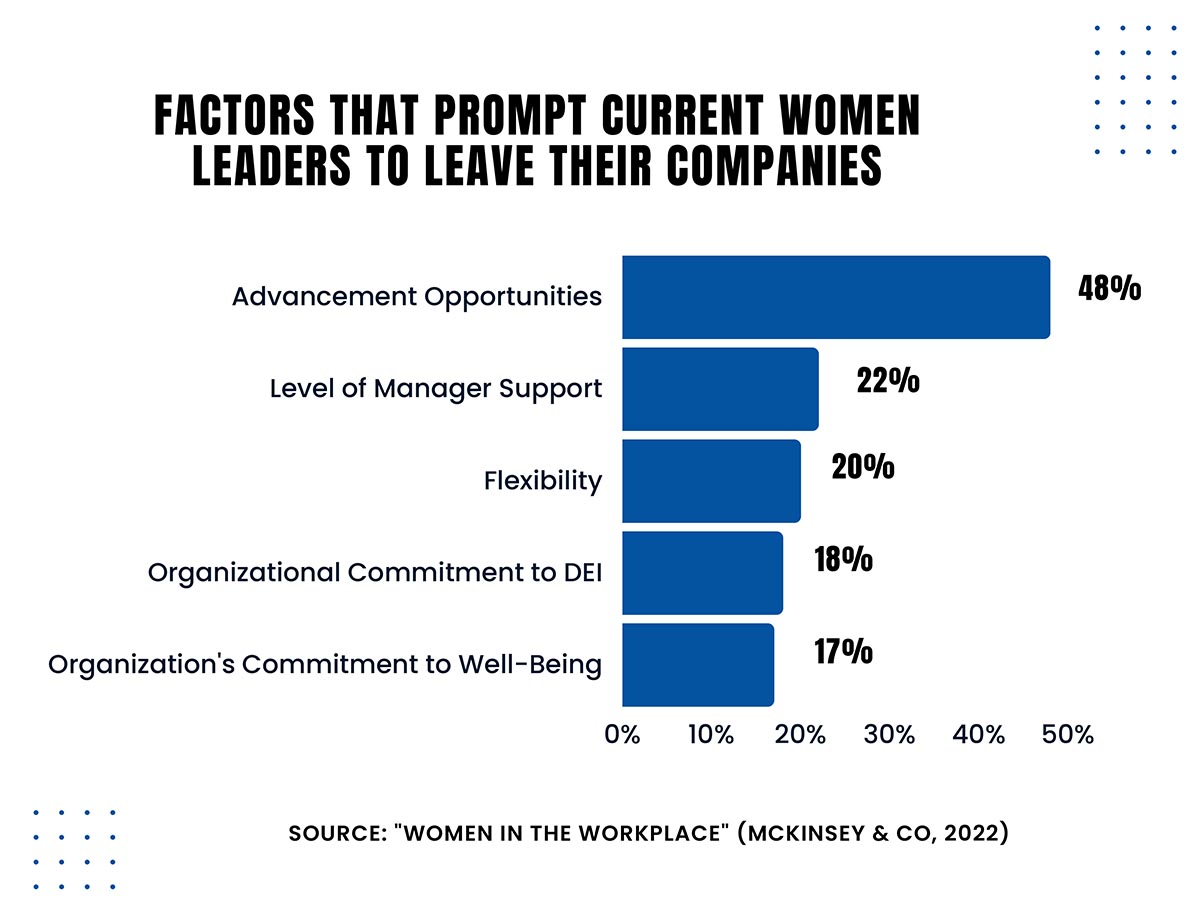
There is a growing body of research suggesting that companies with a higher percentage of women on their leadership teams tend to perform better financially than those with fewer women in leadership positions. This phenomenon is not simply a matter of fairness or equity. It appears to be directly linked to improved business outcomes.
Studies have consistently found that companies with more diverse leadership teams are more likely to outperform their peers. For example, a study by McKinsey & Company found that companies in the top quartile for gender diversity on their executive teams were 25% more likely to have above-average profitability than companies in the bottom quartile.

A plethora of studies backup these results. For instance, Catalyst conducted a study that revealed that companies with greater representation of women on their board of directors enjoyed higher return on equity, sales and invested capital compared to those with fewer women on their boards.
Another survey conducted by the Peterson Institute for International Economics, which covered 21,980 publicly traded companies across 91 countries, discovered that an increased number of female leaders in top positions of corporate management was positively associated with enhanced profitability.
Why does having more women in leadership positions improve a company's financial performance?
1. Women bring different perspectives and experiences to the table. This can lead to more creative and innovative solutions, as diverse teams are more likely to generate new ideas and approaches. In addition, women tend to be more collaborative and inclusive, which can lead to better decision-making and more effective teamwork.
2. Women tend to be more highly educated. Higher levels of education tend to lead to more diverse perspectives. According to the Harvard School of Public Health, women in the United States hold
- 57% of bachelor’s degrees,
- 62%+ of master’s degrees and
- 53% of advanced professional degrees such as PhDs, medical degrees and law degrees.
3. Having more women in leadership positions helps companies better understand and serve their customer bases. Women make up a significant portion of the consumer market, and companies with more women in leadership positions are better equipped to develop products and services that meet the needs and preferences of female consumers.
4. Companies with more women in leadership positions tend to have better employee engagement and retention. Not only are women more likely to be satisfied with their jobs and committed to their employers when they see opportunities for them to advance, but job engagement and performance for an employer’s team overall tend to be higher under women’s leadership, as well.
5. Companies with women directors deal more effectively with risk and focus more strongly on long-term priorities. Women directors are more likely to encourage thorough discussions and deliberations, and by bringing more diverse perspectives and experiences to the table, they can help identify risks and opportunities that may have been overlooked.
Even with so much evidence of the value of women in leadership, too many companies are still upside-down in this area—and to their own detriment. Now it’s up to individual companies to take the necessary steps to turn this around.
Turning It Around
How can companies increase the percentage of women on their leadership teams? The first step is to prioritize diversity and inclusion as a business imperative. This means…
- Setting targets for gender diversity at all levels of the organization and holding leaders accountable for meeting these targets
- Creating a culture that values and celebrates diversity and providing training and development opportunities to help women advance into leadership roles
- Taking steps to remove barriers that may be preventing women from advancing
- Taking steps to keep them from leaving once they do reach positions of leadership
Why are qualified women leaving their roles? According to a 2022 study from McKinsey & Company…
- Lack of opportunity to advance (48%)
- Lack of manager support (22%)
- Lack of flexibility (20%)
- Organization’s lack of commitment to diversity, equity, inclusion (DEI) (18%)
- Organization’s lack of commitment to well-being (17%)

All of these are factors fully within the organization’s control.
It’s Just Good Business
After decades of research, the data points to the same conclusion. A healthy, thriving company culture, and a company’s healthy bottom line, benefit from the diversity of perspectives and approaches that come with diversity in leadership. Increasing the percentage of women on a company’s leadership team is not only the right thing to do from a social justice perspective. It is just good for business.









Discussion
Join the discussion Sign In or Become a Member, doing so is simple and free